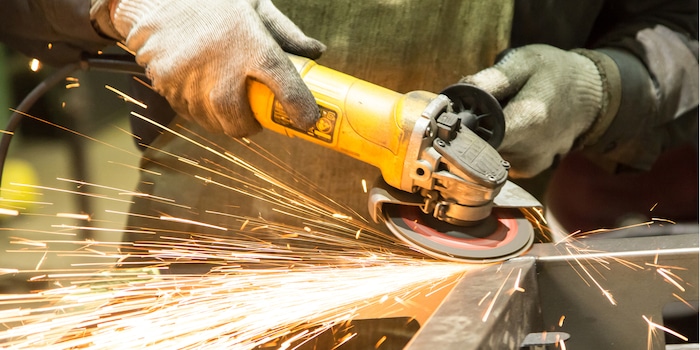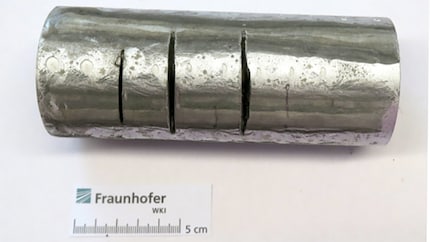
This material is "uncuttable"
After a minute, the angle cutter is blunt and the cut is still barely deeper: thanks to its sophisticated design, this material cannot be cut.
Scientists have developed a material that cannot be cut with a drill or angle grinder. It contains ceramic balls with a diameter of just under one and a half centimetres, which are embedded in a relatively flexible aluminium foam. The combination of hard and soft components leads to vibrations that act back on the cutter and make it blunt. At the same time, the drill or the disc of the cut-off machine rubs off powdery material from the ceramic balls, which also clogs the cutting edges and blocks the tool.
In the specialist journal "Scientific Reports", the team led by Stefan Szyniszewski from Durham University presents their invention. The balls and rods are first produced from pressed aluminium powder containing a foaming agent. Both are placed in a mould, whereby the balls form a regular pattern and are encased in the aluminium. Under heat, the aluminium foams up and forms the outer, soft matrix. According to the scientists, their development was inspired by the skin of the grapefruit and the extremely resistant shells of abalone. These materials also owe their resilience to a mix of soft and hard.
The future of secure front doors and bike locks
The samples made from the material, which the researchers named "Proteus" after its inner changeability, could not be cut using water jet cutting: The spherical shape of the embedded ceramic repeatedly deflected and widened the jet, rendering it ineffective, writes the team, which also included scientists from the Fraunhofer Institute for Machine Tools and Forming Technology IWU in Chemnitz.

Thanks to its many cavities, the material is comparatively light, but still resistant to pressure. Depending on the area of application, the size of the spheres, the porosity of the foam and numerous other parameters can be fine-tuned, the scientists write - depending on whether the material is to be used in a house or safety door or in the form of a cut-resistant arm protection plate. Security applications such as bicycle locks are also conceivable.
Spectrum of science
We are a partner of Spektrum der Wissenschaft and want to make well-founded information more accessible to you. Follow Spektrum der Wissenschaft if you like the articles.
[[small:]]
Experts from science and research report on the latest findings in their fields – competent, authentic and comprehensible.
From the latest iPhone to the return of 80s fashion. The editorial team will help you make sense of it all.
Show all